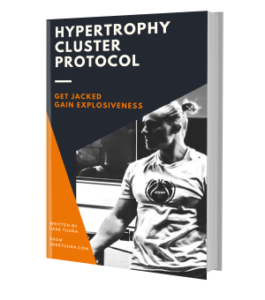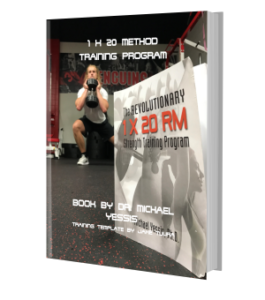https://podcasts.apple.com/us/podcast/jacked-athlete-podcast/id1462537296?i=1000704121310
“Rock climbers are very motivated. They like to try hard. They tend to have really good compliance, tend to be overly compliant. So it’s really over training [cause of finger tendon issues].”
“It’s maybe easier to start jogging because you’ve been walking your whole life. But it’s not necessarily easy to start climbing because you haven’t been loading your fingers in the same way. And so even easy climbing is considered risky for the most common overuse injury, is tenosynovitis.”
“93 % of climbers will have some sort of overuse injury, and the most common is finger injuries.”
“The muscles, the extrinsic muscles, they live in the forearm. And then maybe midway down the forearm, they turn into tendons. And then there’s essentially eight tendons, two on top of each other, that pass to digits two through five. So index through pinky finger, and then the thumb has its own flexor tendons. And so the ones that get most commonly injured are the middle two finger tendons of climbers. So the middle finger and the ring finger and primarily because they’re the longest.”
“The tendon sheath runs the length of the finger all the way out to the tip of the tendon. So it’s like a fibrous tunnel that the tendon runs through.”
“The flexor tendons of the finger are kind of made like a fishing pole. The fishing pole is a really easy analogy where when you cast your pole and then you catch a fish and you pull back on it, it bends the pole. And so the line going through the guy wires, that’s kind of what happens when you put tension on the pulleys as a climber.”
When we climb, we grab onto things, but it’s not like a constant steady position. There’s some sliding that happens back and forth along the undersurface of the pulley and the tendon sheath, is very similar to other tendons. You get the compression, the shearing, but you get the tensile load, but then you also get irritation to that sheath underneath it.”
“The pulleys provide like this sling upon which you can generate force, specifically at the PIP joint.”
“One of the most common pathologies of the tendons comes from lot of repetitive stretch to the pulleys. And then with that stretch, you get compression of the tendon sheath, you get ischemia, and as a consequence, get hypertrophy. And so the tunnel can get a little smaller as the tendon gets a little bigger. And so that creates more, you know, kind of space closure there, which can be a problem.”
“The one thing that’s really unique about the climber’s hand is like kind of the compressive tendinopathy of the Achilles. Like we actually grab on to really small holds with the end of that tendon and so holds that are maybe 15 millimeters or 1.5 centimeters long, imagine grabbing onto that with the end of your fingertip and being able to hang with one arm. Like that’s the kinds of loads that climbers can put on these tendons.”
Early tendon soreness from overuse: “And a lot of that soreness comes from that new compression of the tendon on the tendon sheath, but also the pushing back of the hold against that tendon sheath. So the sheath kind of gets pinned between the tendon and the hold, and then there’s some sliding that happens along the tendon. And so that’ll create an inflammatory response within the tendon sheath that is usually easy to detect on an ultrasound with like more fluid.”
Finger tendon rehab: “Best practice would be borrowing that information from the elbow tendon literature, lower extremity, which certainly has way more than the elbow does. So we borrow that research and we apply those same methodologies.”
“The thing that climbers need to be more aware of or that practitioners do is the fingers aren’t the same length. And so one of the more nuanced thought processes that we need to have is climbers like to use like a flat 20 millimeter edge for their training. It’s very classically used, but that doesn’t load the fingers evenly. And so because of that, if we only do rehabilitation on a board that has that width, the whole length, then we overload the middle two fingers and we don’t get low to the outside two fingers. So when doing the rehabilitation, I like to use circular objects, kind like the size of an American softball or American baseball to squeeze and lift loads with. And I also like to use something called a fingerboard with a rounded jug over the top.”
“So most people that you probably work with or see in a normal gym, they deadlift with straps, just kind of natural. And that’s because they don’t have strong enough hands to actually lift the load. But for rock climbers, they’re the very opposite. When they learned to deadlift, they don’t even think about wearing straps because they always can grab the load. So think about how heavy that load is on the fingers. And then in addition to that, they do their normal climbing, which has a big load or the same probably maybe not the same but you know, similar types of loads off the wall. And so it’s really just like, that’s a form of compression, the deadlifting that we got to get away from. So in the rehab context, I have my athletes wear straps for deadlifting, wear straps for doing pull-ups or change the tool they’re using, and then use more rounded structures to start loading the fingers.”
Rehab: “I don’t take away the sport as much as you would think… a tendon pathology is usually a power limiter, not a performance limiter. A lot of athletes around the world are participating in their sport with some sort of tendon injury, but their power is lower. They don’t have the same power output.”
“In some cases with tenosynovitis, they need to stop climbing for three or four weeks. With pulley ruptures, same thing initially, weeks off and then just a gentle slow load back in.”
Finger tendon rehab: “They gotta drop the volume. Because climbing is so unique in the sense that most of the climbers that I’ll talk to, get injured. They are warming up doing easier climbing, so they’re grabbing big holds. And then in conjunction with their climbing session, they’re using a fingerboard to do training, which is stressful to that joint. And then they’re also doing weightlifting on the side a lot of times. And then a lot of them like to do mountain biking and other sports. And so it’s just a lot of repetitive use of those joints.”
“Another thing that happens in climbing is people come from other sports and they are very familiar with the training practices and the frequency. And if they don’t have that same slow build of tolerance, which they don’t, if they’re new, like that’s so much load for that joint. It’s not like going from soccer to track and field, right? It’s like totally different avenue with the hands.”
“When people get new to climbing, it’s so exciting because you progress very quickly, but it’s still relatively hard on the hands. And so what I typically say is like a couple of days a week is probably fine for someone that’s new to climbing. So you go on a Monday, you go back on a Thursday or a Friday, and then you do that again.”
“High level climbers apply less force on their fingers than people that are not as high level. And so the problem with being a beginner is you don’t put pressure through your feet and you just pull on your upper body.”
“If you’re new to climbing and you want to experience the sport, come in and do it until you’re tired. But you’ll know when you’re tired, like don’t push into that too hard. And then leave and rest plenty of days. Make sure your tendons feel normal again, go back and do it again. You gotta do that and be patient for a couple of years.”
“The climbing style has changed quite a bit over the years. It’s not all finger strength grabbing down on the smallest holds. It’s very much like parkour dynamic. It’s very much more athletic than it used to be. So athletes now can get away with that because it’s not so savage on the fingers.”
“If you have long arms, a short torso, and really flexible hips, you can get your body in positions on the wall that tend to be very efficient for rock climbing.”
“In the climbing world, everyone wants to attribute the gains with heavy strength training on a fingerboard but I would argue that most of that is developmental over years and so just like in other tendons the ligaments in the joint will get developmentally larger if kids grow up climbing and so just like in every other sport climbers now that were kids 10 years ago, 20 years ago, now that are adults, they’re like doing all these phenomenal things with the sport and just taking it to new levels.”
“It’s just like any other tissue, if you under load it you’re just as risky of making it pathologic as you are if you’re overloading it. So you always got to like find that middle ground for athletes.”
Underloading the rehab: “Yeah, all the time. And it’s obviously not anyone’s, no one’s intending to do that. They just don’t know what climbers do.”
“I always try and think about strength training for climbers just like any other athlete. We do it because it’s protective, but we do it because it has a different adaptation to the tendon and the pulleys as far as we know. And we want to do a small amount of it just like other strength training to make sure we can practice our sport more.”
Pulley rupture: “It’s going to be a little bit pathological and the analogy is like the roots on a tree is a really good analogy. So the pulleys, you know, go over the top of the tendon and then they come into the bone. But the pulleys dense regular connective tissue as it goes into the bone, it spreads out like the roots on a tree. And so with a lot of consistent inflammatory response with loading a lot of asymmetric rotation of the pulley. It’s kind of like a big storm in one direction and it can just kind of like slowly pull the roots away. And then you have the big mechanism where it pops. It’s actually not common to have a pulley rupture with testing or training. I mean, it definitely can happen, but the mechanical factor that creates the greatest increased risk of pulley rupture is when you’re at that 90 degree position and you’re applying a lot of force and you open the joint really fast. So it’s a rapid eccentric load.”
Rehab: “So it’s really just like giving the tissue enough time to calm down, make sure all the nutritional needs are met, and then we’re just gonna keep reloading the tendon.”
“Partly the reason that people get DeQuervain’s is just a lot of repetitive use. And so I think it’s largely from that climbers will be doing a lot of like thumb across the fingers when they’re grabbing onto pockets or four fingers.”
Instagram: https://www.instagram.com/c4hp/?hl=en



